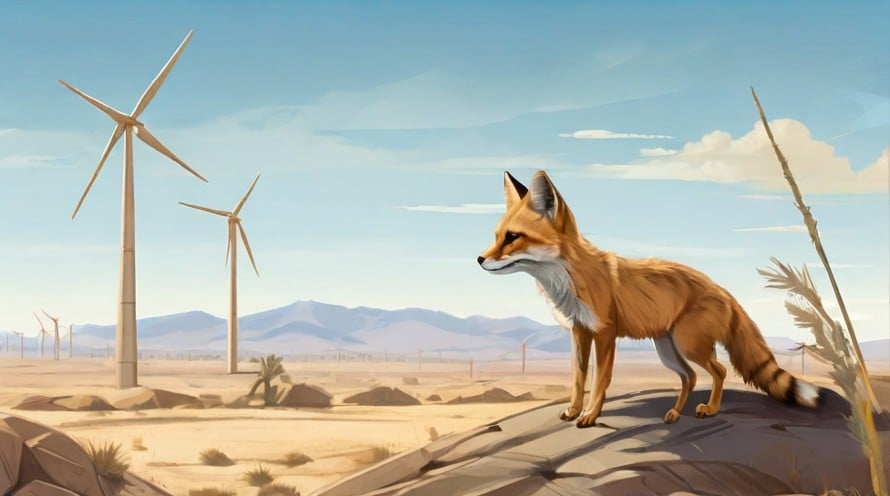As the world grapples with the dual crises of climate change and biodiversity loss, a new study from the University of California, Davis, sheds light on the potential conflicts between renewable energy development and the future habitat ranges of threatened and endangered species in the southwestern United States.
The study, published in the journal Nature Climate Change, examines the impact of climate change and renewable energy projects on the iconic Joshua tree and the federally endangered San Joaquin kit fox. By overlaying renewable energy siting maps with the projected ranges of these species, researchers found that climate change alone could lead to a 31% loss of Joshua tree habitat and an 81% loss of kit fox habitat by 2070, under a moderate emissions scenario.
When existing and proposed renewable energy projects were taken into account, an additional 1.7% of Joshua tree habitat and 3.9% of kit fox habitat could be lost. This highlights the need for careful planning and consideration when siting renewable energy projects to minimize their impact on biodiversity.
Uzma Ashraf, the study’s first author and a postdoctoral scholar at UC Davis, emphasizes the importance of using advanced computer modeling to improve our understanding of how to site renewable energy resources in ways that benefit biodiversity and their shifting ranges.
The study also notes that while renewable energy development is crucial in the fight against climate change, it must be done in a way that reinforces goals for biodiversity conservation and social justice. The Wild Energy Center at UC Davis, directed by corresponding author and Associate Professor Rebecca R. Hernandez, is working to develop a framework to help clean energy developers make future-facing decisions on siting that consider the expected range shifts of animals.
The study’s findings underscore the urgent need for a balanced approach to clean energy development that takes into account the dynamic nature of species maps under climate change. By using state-of-the-art computational tools, researchers aim to chart a safe passage for renewables that minimizes their impact on biodiversity.
#CleanEnergy
#BiodiversityConservation
#ClimateChange
#SustainableFuture


